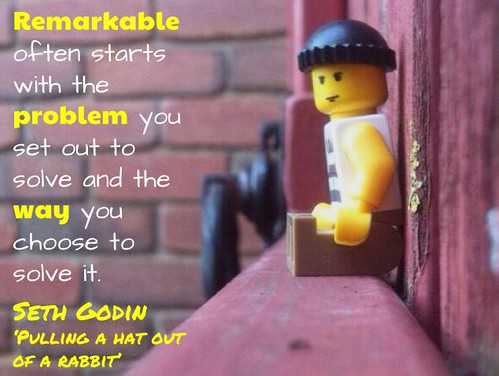“I Found Waldo”by jndotcom is licensed under CC BY-NC-SA 2.0
Where am I now? Before I can talk about where I am now I need to talk about where I was before now.
I started EDCI 568 with, what I thought was, a strong awareness of digital literacy, online learning, and online collaboration.
Prior to moving to Victoria on July 1st, 2019, I was living in Inuvik working at Beaufort Delta Divisional Education Council (BDDEC) as the Math and Science Programs Consultant. Below is where the communities of BDDEC are located.
I have taught synchronous online learning classes in the Northwest Territories Northern Distance Learning Program (NDL), which is part of the NWT Education Renewal. NDL provides learning opportunities to students in remote communities that we are unable to provide as a district due to the costs of providing variety to our students. The focus is to provide academic courses to remote communities, so students are able to access University without having to leave their community while in high school.
At the time, I was more of a “trailblazer” amongst the teachers (in the eyes of the NDL consultant, and this was 2015/16). I attempted to leverage what I thought was digital learning as much as I could. Northern Distance Learning uses a Modular Object-Oriented Dynamic Learning Environment (MOODLE) as the backend framework for online learning. There are a few reasons for this, but the largest that I have heard is that we are able to host MOODLE on our internal servers, so this provides an easier access to the services for our bandwidth challenged communities.
Some things I thought I was doing well, but I now seriously question with my newly tinted EDCI 568 glasses:
- Digitizing all tests so students could take their tests online.
- Digitally uploaded notes that students could use to generate deeper notes on their own.
- Requirement of students to generate a weekly question, and respond to two other students questions (my attempt at forcing collaboration amongst students).
- Digitally recorded podcasts to talk about sexually transmitted infections (STIs)
I did do some things within the digital environment that I think aligned with what I now know to be strong pedagogy. The strongest activity that I created as having students research a local species that is culturally relevant to their area. They created a class Wiki to share their findings and their research with the class.
Another aspect of online learning that I was involved with, prior to EDCI 568, was my Numeracy Network. This is a network composed of voluntarily selected teachers (I asked them to participate) where we met synchronously once a month to discuss the pedagogy of math. I would lead these meetings and set the agenda.
That was my online social awareness. I did not understand Twitter (I had an account but all I used it for was to passively follow some sports writers). I did not know about digital privacy rules, such as British Columbia’s Freedom of Information and Protection of Privacy Act (FIPPA). These quick examples of my ignorance is just the tip of a much larger iceberg.
So, that was a quick summary of where I was, now I will try to summarize where I am.
“Security”by Got Credit is licensed under CC BY 2.0
I am now aware of how unaware I was in regards to digital privacy and security. I wrote a whole bog post about it called Digital Security and Accountability…..but, so please read that if you want a deeper understanding of my current interpretation of digital security. I now know how important it is for us to educate students about their digital footprint, and really like the scaffolding presented in BC’s Digital Literacy Framework. When I think of the students that I have interacted with in grade twelve, I would be ecstatic if they could even demonstrate the skills and knowledge of a grade 3-5 student, based on the framework. For example, I regularly coached students on bias in digital resources, which is point 3 under Grades 3-5 (Ages 8-11) in BC’s Digital Literacy Framework.
After finding out what BC is offering, I did a search for what we are offering in the NWT. I did not find specific curriculum guides, although I know we are in the process of creating a digital literacy course under our education renewal that will be available to students in junior high (grade 7, 8, or 9). They do offer a Teacher Resource that essentially links up to Mediasmarts. From the mission and beliefs page: “MediaSmarts is a Canadian not-for-profit charitable organization for digital and media literacy. Our vision is that children and youth have the critical thinking skills to engage with media as active and informed digital citizens.” It sounds like a strong resource, but is partnered with: Telus, Cira, Bell, Facebook, Google, Teksavvy, Wattpad, CCSA, NFV, APTN, Bell Media, and Corus. I will need to spend some time looking at the resource to get a stronger gage and suitability of it as a classroom resource.
That last sentence, and change of thought, is new to me. I do not think that, prior to taking EDCI 568, I would have actually questioned the motives of a company (Google knows everything about me). I would have seen that the NWT Education, Culture, and Employment (ECE) recommends using it, and I would have just blindly used it. Now I actually question the purpose behind the lessons, and wonder if a curated lesson is the best approach to teaching digital literacy to students. This thought process leads me to my newfound appreciation of inquiry.
“Pulling a hat out of a rabbit”by mrkrndvs is licensed under CC BY-SA 2.0
For the past few years I have preached the importance of problem-based learning in math. My core ideology speaks to the importance of students gaining the capacity to navigate challenging experiences and developing a skill set that they can use throughout life. Trevor Mackenzie (@trev_mackenzie) is a great resource that came and talked to us about how he setups inquiry learning in his classroom. He actually provided each of us with a book. The book I received is “Dive into Inquiry,” I cannot wait until I get a break from reading journal articles so I can actually read it. On his blog #MeaningfulMonday he does an excellent nine blogpost series debunking the myths of inquiry. He talked about the importance of a scaffolded approach, and used the analogy of a swimming pool, with different levels of learners needing different levels of support, with the end goal being free swimming by the end of the year. This spoke to me, and I am looking forward to exploring this concept. I am now aware that EDCI 568 has an inquiry lens; we are in charge of what we are actually researching. There is structure as far as classroom design and expectations; however, we are free to explore our learning passions, within the confines of a sandbox. That is why I am able to blog as my passion reigns, I blog about the aspects of the course that I choose.
Another huge connection that I made regarding inquiry learning was from reading The Five R’s for Indigenizing Online Learning: A Case Study of the First Nations Schools’ Principals Course. I wrote a blog entry about this discovery titled Indigenized Online Education for All of Canada…Really? Spoiler alert, I believe they have found a model for Indigenized Online Education, and the key to it is through an inquiry lens. This was a huge breakthrough in my thinking processes. When we create inquiry-based classes indigenous youths can do inquiry about their culture and their learning! This allows you to construct a culturally relevant class in a seemingly unrelated class. This is something that I did, without realizing it, when I taught the NDL Biology 30 (Biology 12) course, that I mentioned earlier. I did not go full-scale inquiry on the subject, as I was still directing their learning, but I did allow them to create something about an animal that was culturally relevant. I would have to play around with ideas about how to do this with math. One possibility is finding an historical example of math and bring it into the classroom. Again, this is not student led inquiry, but is at least in the swimming pool.
A key component of my profession that I have talked the talk, but continue to stumble on the walk, is collaboration. I have been preaching the importance of collaboration within our district. I encourage people to get together and share their ideas. My Numeracy Network tries to get people to engage in discussion (which I direct and set the agenda). I have teachers create their own rubrics for measuring their adaptation of new pedagogical strategies that I am trying to get them to use. After some reflection, I know that I do not do a great job of bringing voices together and directing my actions based on those voices. I do not try to generate an overall conversation regarding math in our district (or anything for that matter). I tend to be a very private individual and try to keep most of my thoughts quiet. I am tall, and have a loud voice, so if I am not careful, I can accidentally take over a conversation. This is something I try to avoid, which can cause me to retreat into a shell. As I get more comfortable of the social norms of a group, I feel more comfortable navigating the space, mainly because I know who needs that time to speak, and I can be loud but can also provide others the platform when they want it.
“IMG_2740”by gotshoo is licensed under CC BY-NC-SA 2.0
EDCI 568 has stretched my comfort zone by encouraging me to be more vocal in a back channel method. Take this blog for example. Writing my thoughts is a stretch outside of my comfort zone, but I like to stretch, so am trying to step up to the challenge. EDCI 568 has stretched my comfort zone regarding social media as well. I have been a very passive consumer of social media. Take Facebook for example, I have an account. The last thing I posted was thanking everyone for the birthday wishes. The thing I posted prior to that, the exact same post, a year earlier. Three years ago, I posted some videos about harvesting lumber in the NWT, and that is it for the past ten years. I can say the same thing about Twitter, I only used it as a passive channel to see sports writers’ posts.
When I took EDCI 568, my goal was to go as all in as I could. I have been trying to use Twitter. This has been my biggest shock. I can see so much potential value within this platform for a quick sharing of ideas and collaboration. If you are in the middle of something interesting, or come across something, you can just share it. People can then share things with you. I have experienced the warm feeling when someone re-Tweets my thoughts. It feels nice, and is a boost to my ego.
I think that these extra tools for collaboration can make online learning a much more appreciative topic. I will highly encourage the NDL coordinator to look into things like Flipgrid, Twitter, Trello, and WordPress. I think that we can do so much more within our NDL environment to encourage student voice, choice, collaboration, and enjoyment. I also think that these tools can help generate a social network within our district to help support the growth and advancement of our teachers. I wrote a blog post (it is academic style, so may be lacking some flair) called Whole System Change and Social Networks.
In the end, I am very grateful for EDCI 568. I have been exposed to a lot of new learning opportunities and methods of collaboration. I am hoping that I am able to continue to learn about these tools, and can spread their benefits to others within my district. I also hope that I can continue to leverage the connections that I have made.
“066 resources word color copy”by Sustainable Economies Law Center is licensed under CC BY-SA 2.0
https://sites.google.com/view/bc-numeracy-network – BC has a Numeracy Network
http://theory.cribchronicles.com/ – Bonnie Stewart’s blog (her portfolio is at: http://bonstewart.com/) You can also follow her on Twitter: @bonstewart.
Sunil Singh (@mathgarden) interesting individual to follow on Twitter, if you are interested in math discussions.
https://www.maa.org/external_archive/devlin/LockhartsLament.pdf – Just a great read about why we are actually teaching math.
https://technolandy.wordpress.com/ – Ian Landy’s (@technolandy) site and blog, a lot of deep pedagogical thought and insights go on here. Ian recommended following Sunil Singh and linked to A Mathematician’s Lament on my blog.
David Trus has a great webpage and blog to follow: http://pairadimes.davidtruss.com/ He is also active on Twitter, @datruss.
Trevor Mackenzie (@trev_mackenzie) is a great resource that came and talked to us about how he setups inquiry learning in his classroom. He actually provided each of us with a book. The book I received is “Dive into Inquiry,” I cannot wait until I get a break for from reading journal articles so I can actually read it. He busts 9 myths about inquiry learning on his blog #MeaningfulMonday
Greg McVerry (@jgmac1106) has an interesting website, with a blog, and linked articles: http://jgregorymcverry.com/.
Verna Roberts (@verenanz) has an excellent blog post about open learning and the benefits of social networks: http://www.openclassroomonline.com/proposing-oldi-version-1-an-open-learning-design-intervention-for-k-12-open-educational-practice/
James Tanton (@jamestanton) from https://gdaymath.com/ is an amazing resource. I am a huge fan of his problem-based approach to mathematics. He teaches that you can learn math for the pure enjoyment of learning math.
Jo Boaler (@joboaler) from https://www.youcubed.org/ She runs a Massive Online Open Course (MOOC) about a more open approach to teaching math. My numeracy network did a book study on her book Mathematical Mindsets this year. Some of her thoughts may be a little radical, but the vast majority of her work is accessible and easily implemented into a classroom.




Recent Comments